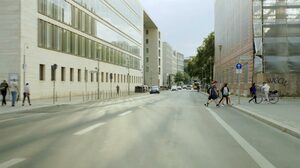Seeing With Four Eyes

Seeing With Four Eyes
Carlo Siegfried
| Titel |
|
| Titel (en) |
|
| Autor/in | |
| Beschreibung (de) |
|
| Beschreibung (en) |
|
| Typ des Projekts/Werks | |
| Schlagworte | |
| Datierung |
|
| Sprache | |
| Ort: Institution | |
| Ort |
|
| Stadt | |
| Land |
5 Inhalte
- Seite 1 von 1

| Titel |
|
| Titel (en) |
|
| Autor/in | |
| Beschreibung (de) |
|
| Beschreibung (en) |
|
| Typ des Projekts/Werks | |
| Schlagworte | |
| Datierung |
|
| Sprache | |
| Ort: Institution | |
| Ort |
|
| Stadt | |
| Land |



